Effect of Extremely Low Frequency Electromagnetic Fields (EMF) on Phospholipase Activity in the Cultured Cells
- PMID: 21311685
- PMCID: PMC3034124
- DOI: 10.4196/kjpp.2010.14.6.427
Effect of Extremely Low Frequency Electromagnetic Fields (EMF) on Phospholipase Activity in the Cultured Cells
Abstract
This study was conducted to investigate the effects of extremely low frequency electromagnetic fields (EMF) on signal pathway in plasma membrane of cultured cells (RAW 264.7 cells and RBL 2H3 cells), by measuring the activity of phospholipase A(2) (PLA(2)), phospholipase C (PLC) and phospholipase D (PLD). The cells were exposed to the EMF (60 Hz, 0.1 or 1 mT) for 4 or 16 h. The basal and 0.5 µM melittin-induced arachidonic acid release was not affected by EMF in both cells. In cell-free PLA(2) assay, we failed to observe the change of cPLA(2) and sPLA(2) activity. Also both PLC and PLD activities did not show any change in the two cell lines exposed to EMF. This study suggests that the exposure condition of EMF (60 Hz, 0.1 or 1 mT) which is 2.4 fold higher than the limit of occupational exposure does not induce phospholipases-associated signal pathway in RAW 264.7 cells and RBL 2H3 cells.
Keywords: Arachidonic acid; EMF; Phospholipase A2; Phospholipase C; Phospholipase D.
Figures
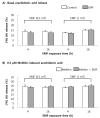
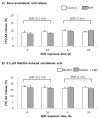

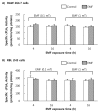
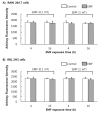
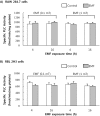
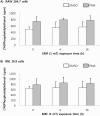
References
-
- Wertheimer N, Leeper E. Electrical wiring configurations and childhood cancer. Am J Epidemiol. 1979;109:273–284. - PubMed
-
- Floderus B, Persson T, Stenlund C, Wennberg A, Ost A, Knave B. Occupational exposure to electromagnetic fields in relation to leukemia and brain tumors: a case-control study in Sweden. Cancer Causes Control. 1993;4:465–476. - PubMed
-
- Matanoski GM, Elliott EA, Breysse PN, Lynberg MC. Leukemia in telephone linemen. Am J Epidemiol. 1993;137:609–619. - PubMed
-
- Glaser KB. Regulation of phospholipase A2 enzymes: selective inhibitors and their pharmacological potential. Adv Pharmacol. 1995;32:31–66. - PubMed
-
- Attur MG, Patel R, Thakker G, Vyas P, Levartovsky D, Patel P, Naqvi S, Raza R, Patel K, Abramson D, Bruno G, Abramson SB, Amin AR. Differential anti-inflammatory effects of immunosuppressive drugs: cyclosporin, rapamycin and FK-506 on inducible nitric oxide synthase, nitric oxide, cyclooxygenase-2 and PGE2 production. Inflamm Res. 2000;49:20–26. - PubMed

